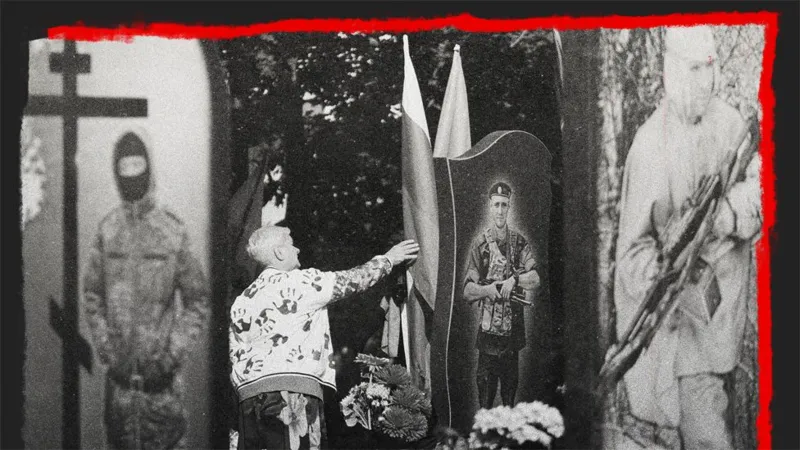More than 70,000 people fighting in Russia’s military have now died in Ukraine, according to data analysed by the BBC.
And for the first time, volunteers – civilians who joined the armed forces after the start of the war – now make up the highest number of people killed on the battlefield since Russia’s full-scale invasion began in 2022.
Every day, the names of those killed in Ukraine, their obituaries and photographs from their funerals are published across Russia in the media and on social networks.
BBC Russian and the independent website Mediazona have collated these names, along with names from other open sources, including official reports.
We checked that the information had been shared by authorities or relatives of the deceased – and that they had been identified as dying in the war.
New graves in cemeteries have also helped provide the names of soldiers killed in Ukraine – these are usually marked by flags and wreaths sent by the defence ministry.
We have identified the names of 70,112 Russian soldiers killed in Ukraine, but the actual number is believed to be considerably higher. Some families do not share details of their relatives’ deaths publicly – and our analysis does not include names we were unable to check, or the deaths of militia in Russian-occupied Donetsk and Luhansk in eastern Ukraine.
Among them, 13,781 were volunteers – about 20% – and fatalities among volunteers now exceed other categories. Former prisoners, who joined up in return for pardons for their crimes, were previously the highest but they now account for 19% of all confirmed deaths. Mobilised soldiers – citizens called up to fight – account for 13%.
Since October last year, weekly fatalities of volunteers have not dipped below 100 – and, in some weeks, we have recorded more than 310 volunteer deaths.
As for Ukraine – it rarely comments on the scale of its deaths on the battlefield. In February, its president, Volodymyr Zelensky, said 31,000 Ukrainian soldiers had been killed, but estimates based on US intelligence suggest greater losses.
The story of Rinat Khusniyarov is typical of many of the volunteer soldiers who died. He was from Ufa in Bashkortostan and had been working two jobs to make ends meet – at a tram depot and a plywood factory. He was 62 years old when he signed his contract with the Russian army in November last year.
He survived less than three months of fighting and was killed on 27 February. His obituary, in a local online memorial website, simply called him “a hardworking, decent man”.
According to the data we analysed, most of the men signing up come from small towns in parts of Russia where stable, well-paid work is hard to find.
Most appear to have joined up willingly, although some in the republic of Chechnya have told human rights activists and lawyers of coercion and threats.
Some of the volunteers have said they did not understand the contracts they were signing had no end date, and have since approached pro-Kremlin journalists to, unsuccessfully, ask them for help ending their service.
Salaries in the military can be five to seven times higher than average wages in less affluent parts of the country, plus soldiers get social benefits, including free childcare and tax breaks. One-off payments for people who sign up have also repeatedly risen in value in many parts of Russia.
Most of the volunteers dying at the front are aged between 42 and 50. They number 4,100 men in our list of more than 13,000 volunteers. The oldest volunteer killed was 71 years old – a total of 250 volunteers above the age of 60 have died in the war.
Soldiers have told the BBC that rising casualties among volunteers are, in part, down to their deployment to the most operationally challenging areas on the front line, notably in the Donetsk region in the east, where they form the backbone of reinforcements for depleted units, Russian soldiers told the BBC.
Russia’s “meat grinder” strategy continues unabated, according to Russian soldiers we have spoken to. The term has been used to describe the way Moscow sends waves of soldiers forward relentlessly to try to wear down Ukrainian forces and expose their locations to Russian artillery.
Drone footage shared online shows Russian forces attacking Ukrainian positions with little or no equipment or support from artillery or military vehicles.




